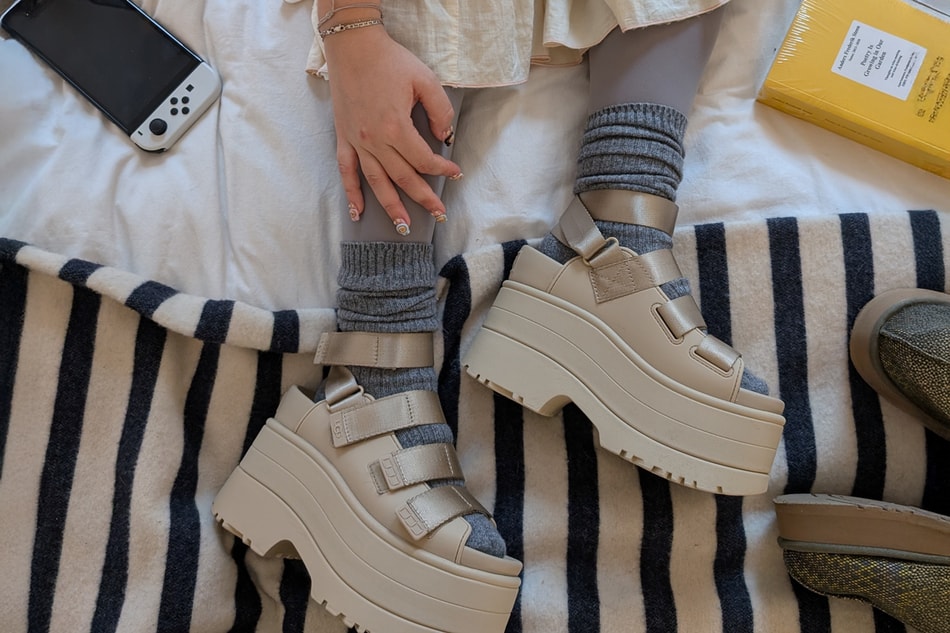Jumping Over the Jumpman: Does Anyone Have the Hops?
There is no shortage of thinkpieces, stat sheets, highlight reels and barbershop debates
There is no shortage of thinkpieces, stat sheets, highlight reels and barbershop debates solidifying Michael Jordan’s rightful claim to the throne. Widely considered the “greatest of all time,” even before his retirement(s), his Royal Airness is often mentioned alongside the likes of Babe Ruth, Wayne Gretzky, Muhammad Ali and Tony Hawk for propelling their respective sport into the globalizing conglomerates they are today. While Ruth jumpstarted one of the most recognizable brands in the world, Ali injected style and intellect to a most violent sport, and Hawk grinded skateboarding into popular culture, no one’s legacy continues to soar quite like Mike’s, thanks in part – or rather mostly – to his revolutionary line of sneakers with Nike and his eponymous Jordan Brand.
But why is it that MJ and his sneakers remain so popular more than a decade after his last professional game? And most importantly, at least for us sneakerheads, how much longer will his dominance atop the footwear industry prevail?

As a result the hall-of-famer has become the benchmark for NBA greatness, because it’s provable. There’s a whole generation of fans hoisting Jordan above LeBron, Kobe, and the like even without having seen him play live.
THE LEGACY
To dissect Jordan’s unwavering popularity, you have to first understand what makes him the G.O.A.T. His legacy is a decorated one, complete with six rings, five MVP awards, 14 All-Star appearances, 10 scoring titles, two gold medals, and 26 game-winners among many other additional accolades. He was known as a stone cold assassin, fueled by fear, doubt, and a serious hatred for losing (note his gambling tendencies). Add in his influence off the court, from long shorts, baldies and Nikes to Big Macs, Hanes and Bugs Bunny, and MJ is more than your prototypical sports legend – he’s the blueprint for modern day branding.
Even well after his professional playing days, the Jordan effect remains just as impactful as ever. Although LeBron James succeeded him as the most popular American athlete according to Nielsen’s 2014 Harris Polls, his Facebook page has at least 5 million more likes than anyone else on that list. Whether it’s attributed to the YouTube clips, NBA TV’s Hardwood Classics, his ownership of the Hornets, the tales handed down from elders, his recent Forbes ranking, or his sneakers, Jordan’s legacy remains fresh and tangible. Whereas MJ’s closest competitors for the G.O.A.T., including 11-time world champion Bill Russell and the dominant Wilt Chamberlain, did not play with the same global television coverage. Case in point, the greatest display of scoring — Wilt’s 100-point game — and one of the most coveted records in all of sports, has only been seen by those in the half empty arena that night.
As a result the hall-of-famer has become the benchmark for NBA greatness, because it’s provable. There’s a whole generation of fans hoisting Jordan above LeBron, Kobe, and the like even without having seen him play live. Then every time a likely superstar is born to the NBA, everything about his game is immediately compared to MJ, while none are able to match it. What makes his legend even more definitive is that the league itself speaks so highly and often of Michael every chance it gets, from pundits to league officials, that it’s rather impossible to forget who he is and what he’s done.

Who are we to cast blame onto the youth for diminishing the “coolness” of our sneakers because they wanted to be a part of the MJ phenomena? As Kanye West said in a recent interview, “Nothing should be exclusive. Everyone should have the opportunity to drink from the same fountain.”
THE SHOES
Similar to his on-court dominance, Michael’s Air Jordan line has become the benchmark for basketball sneakers and sneakers altogether. As the most exciting player of his time, an Air Jordan release caused retail frenzies then and now, 30 years after their inaugural drop. The reasons vary from person to person of course, but for those that have never seen Jordan play, it likely comes down to style, status and historical value. Fashion-wise, the more popular models, generally designed by the visionary that is Tinker Hatfield, found the perfect balance of cutting-edge technology and timeless aesthetics. So while they performed fairly well during their playing days, the clean, iconic design of each sneaker remains stylistically versatile.
The driving force behind Air Jordan’s longevity however has been its perceived value or status, and with status comes style. On one side it proclaims your allegiance to his Airness, to a cultural phenomenon, while the other flaunts a hefty, yet exclusive price-tag. A pair of Jordans become a badge for those around you to tip their hat in respect.
What’s more is that the Air Jordan line is one that transcends generations and cultures. Fathers and sons from all over the world can relive not only Michael’s legacy but a golden era in basketball as each model is accompanied by its own historical significance, representing a certain season, milestone or game in which MJ solidified his greatness.
On the contrary, some of you may be over it, tired of the re-retros, wacky colorways and remastered constructions, but what about the teens just discovering Jordan’s influence? Are we to exclude them or discourage their interest for just being born to a different generation? Who are we to cast blame onto the youth for diminishing the “coolness” of our sneakers because they wanted to be a part of the MJ phenomena? As Kanye West said in a recent interview, “Nothing should be exclusive. Everyone should have the opportunity to drink from the same fountain.”

No one has inspired us quite like Jordan, and no one ever will.
THE REIGN
Which brings us to our followup question, ‘How much longer will Jordan rule the sneaker world?’ With no foreseeable heir to the throne — sorry Kobe and LeBron, your careers are laced with controversies, lackluster sneakers and too many losses — Jordan will remain the benchmark for NBA superstars and their signature sneakers. As a result, his name will continue to be mentioned and debated, thus relevant for years to come. So unless someone comes along with an equal or greater cultural impact, or the worlds of fashion and footwear innovation veer off course, Jordan’s reign will last long after his death. He just did way too much for basketball, athletes, fashion, branding and culture for us to ever forget his influence. No one has inspired us quite like Jordan, and no one ever will.
However, there is one area of his legacy that Jordan often neglects, or rather neglects to be publicized. Although he was recently valued at $1 billion USD by Forbes, making him the 1,741st richest man in the world, we rarely hear about his charitable works or his efforts to bring about positive, humanitarian change. Whereas his closest footwear competitors, LeBron James and Kanye West, are often focused on giving back and building a better, more equal world. This may be only lane that offers the slightest of possibilities to jump over the Jumpman. Jordan’s greatness is just too much to contend with, but if one of these contemporary icons are able to bring about massive socioeconomic change, be it LeBron through his long list of charities or Kanye and his fight against classism, then maybe, just maybe we’ll have an “Air” apparent.





